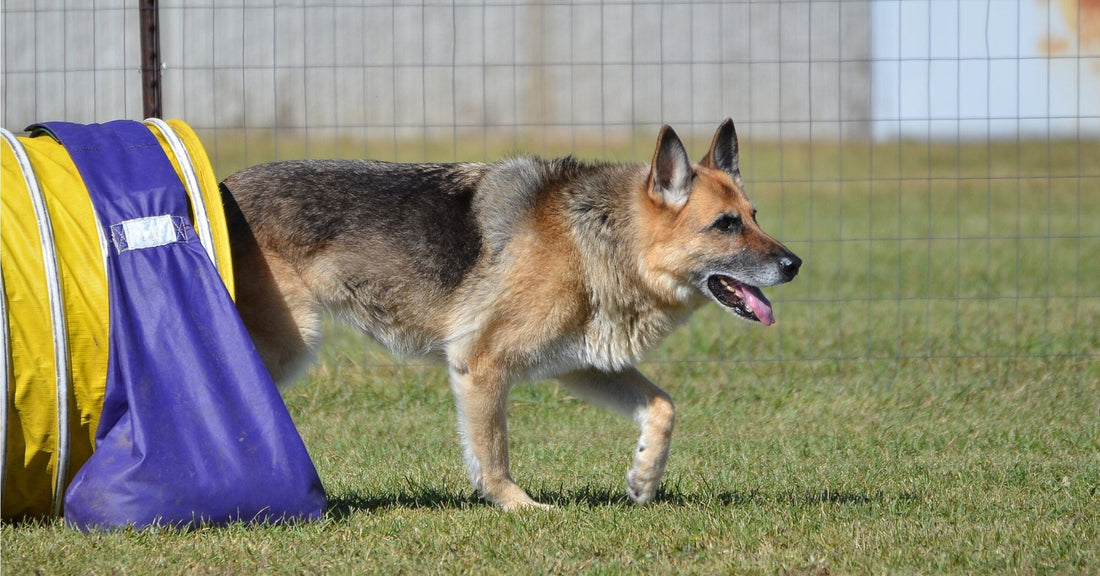Intense Obedience Training: Rigorous Discipline or Too Extreme for German Shepherds?

I think that title will catch a lot of attention. And, perhaps it should. Some people reading this may be completely unaware that this is a real debate that we see all the time in our comments. To be fair, most people who are attracted to the German Shepherd Dog as a breed are interested in training and have a higher level of training on their dogs than people who own other breeds. Which I count as a win because everyone who owns a GSD knows that a large dog, higher than average amounts of prey drive, and little to no training is a nightmare to live with at best, and downright dangerous at worst. So, is there such a thing as too much training?
As you have probably guessed, the answer to this question is complicated. But a simpler answer is: it depends. What lines is the dog from? What's the dog's specific character traits, hardness, and drive? What kind of handler or trainer is working with the dog? It's best to start with some definitions.
First up, we have American, Canadian, Australian, dogs from the UK, etc. These dogs hail from countries that are not particularly choosing German Shepherd Dogs for their ability to do police work or herd sheep. They tend to favor breeding dogs for shows or as pets. In fact, every country I just listed usually imports the police and military working dogs from places like The Czech Republic, Slovakia, Germany and The Netherlands because the dogs available in their respective countries haven't been purposely bred to work, and thus have traded less drive, which makes for better pets, for working ability. 
Next, we have European Show Lines. The UK is in Europe, but I specifically mean mainland countries. Many of whom actually require all German Shepherd Dogs to earn a working title, or their offspring can not be registered as purebred German Shepherd Dogs. Since these dogs are required to get a show rating and a working title, they maintain more working ability. Sometimes, this branch of the GSD family tree is used to herd sheep and even to do police work. They tend to have more drive and more hardness than the aforementioned branch of the family tree.
Lastly, we have Working Line dogs. They, too, must get a show rating and earn a working title, but the focus is on working ability. Strength of character, higher levels of hardness, solid nerve, and higher drive are paramount in that aim. These dogs make excellent sport and police dogs, but their high drive makes them ... interesting to live with for a novice handler and trainer.
I've used character, hardness, nerve, and drive a few times now, and they also deserve a quick definition.
Character is simply who a dog is. For example, some dogs are quick to react aggressively towards a child pestering it (which should never happen, but it does). Others would have to be pushed so far that it would have to be downright abused before it reacted with aggression (and yes, all dogs can be pushed that far).

This is different from another word I used, which is nerve. A nervous dog, even one who has high levels of reactivity, may accept being pestered by a child because of its character. Think of nerve as a genetic lack of fear. Anything and anyone can be made to feel threatened. But a dog with "weak" nerve finds that point much quicker. If a person walking down the street being non-threatening is met with a dog growling and raising its hackles, that dog has weak nerves. If another dog in that situation had the same man shout "boo" to startle the dog, and the dog doesn't flinch, that dog has "strong" nerves.
Hardness (in this instance) is simply a dog's willingness to continue working after a correction, or when they're frustrated. If a dog is low on the hardness scale, training sessions must be kept brief, especially when corrections are involved.
Lastly, we have drive. In this instance, it would more accurately be food and prey drive. A dog with high drive will work longer and harder to get a food or toy reward in training. This lends itself to longer training sessions and more enthusiasm for training.
And now we've come full circle. How much training is too much?

If a dog has weak nerves and you push him too far, too quickly, you can make the dog more nervous. If you push the issue, you could have a dog who is either a nervous wreck, or worse yet, a dog that learns that showing aggression makes people leave them alone. For such a dog, the best approach is slow, steady, and full of rewards based training.
If a dog has poor character, specialized training to teach them what they are, and aren't allowed to do is very important. A vigilant eye must be kept on a dog like that, and they're often harder to read.
If a dog has low drive, they won't enjoy training as much as a dog with higher drive. Short, fun, high-energy training sessions suit them best. If you push them too far, they'll simply get bored and avoid training. That's how you get the infamous "selective hearing" in training. Novice trainers often make the mistake of correcting these dogs and making them dislike training altogether. This was a very common way to train dogs 30 years ago and further back. It resulted in dogs that had a disdain for training, and sometimes feared their trainer/handler.
If a dog has low levels of hardness, corrections must be limited. If they're pushed too hard, they'll simply shut down and stop working all together.

It isn't as simple as lines, or one trait or another. A good trainer takes a full picture of every strength, weakness, and trait that a dog possesses when deciding how to train them. All dogs are dogs, all dogs can be taught using operant conditioning, but the methods of how they're applied are solely dependent on the individual dog. What is too much for one dog, may be a quick warmup for another. Learn to recognize these traits in your dog. And if you go through a trainer, make sure they're not using a one size fits all cookie cutter on your dog if the training is not working or negatively impacting your dog.
That said, all dogs should be training regularly. It is the best way to bond with your dog, and dogs get out of doors, collars slip off, leashes fail, solid training doesn't! Thank you, and let us know what you think in the comments.
You might also like: The German Shepherd's Prey Drive: Understanding And Managing Natural Instincts For A Well-Behaved Dog
























